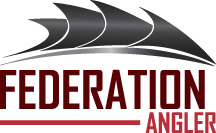Fish 101: Fins and Gills will explore basic fish biology to help you understand how different species use the various parts of their design, like fins, body shape and swim bladders, to feed and thrive in their surroundings. This section will also cover the key handling principles for reducing stress and injury to fish and is based on the understanding that all anglers have a responsibility to preserve the future of the sport.

Why AdvantageAngler?
If you want to catch more fish with family and friends, you need to get an advantage.
AdvantageAngler will give you the essential knowledge you need to ensure you are fishing in the right locations and using the right presentations. This program will provide you with a great overview of fishing techniques, let you know what to look for when on the water and teach you how to get more bites.
AdvantageAngler offers an great deal of practical information in just over 4 hours. The lessons can be completed in just an evening or taken at your own pace.
Enroll Now. More knowledge, more bites!
| Only $19.99 |  |
Ready to take it to the next level! |
|
After completeting AdvantageAngler continue your fishing knowledge with our ProAngler course available in our store. For the serious angler that is ready to take their fishing to the next level, the ProAngler curriculum offers an in-depth look at methods for finding, hooking and landing fish constantly and consistently |
| ProAngler upgrade price: $39.99 |
The AdvantageAngler Course covers the following topics...
Click on a topic to see more information:
Fish 101: Fins and Gills will explore basic fish biology to help you understand how different species use the various parts of their design, like fins, body shape and swim bladders, to feed and thrive in their surroundings. This section will also cover the key handling principles for reducing stress and injury to fish and is based on the understanding that all anglers have a responsibility to preserve the future of the sport.
In this section, you'll walk through step-by-step instructions, animation and video for tying a variety of knots, including those used to attach line to lures and line to leader line. You'll also learn about the characteristics, strengths and applications for each knot and be able to access detailed printable guides through the Faculty of Fishing downloads section.
Casting is a very effective way to target many species. Do it well, and it will put your bait where no other presentation can. That might be the right place to get the bites.
When fish move into deeper water, vertical presentations can be a great way to get your bait right down to them. Vertical techniques require you to position yourself right on top of the fish, in order to keep your bait in a fish's strike zone and trigger bites from even the most neutral or negative fish.
In this lesson, you will learn a variety of techniques that you can use with different presentations. Putting it all together will help you adapt to the day and the conditions, thus allowing you to catch more and bigger fish!






